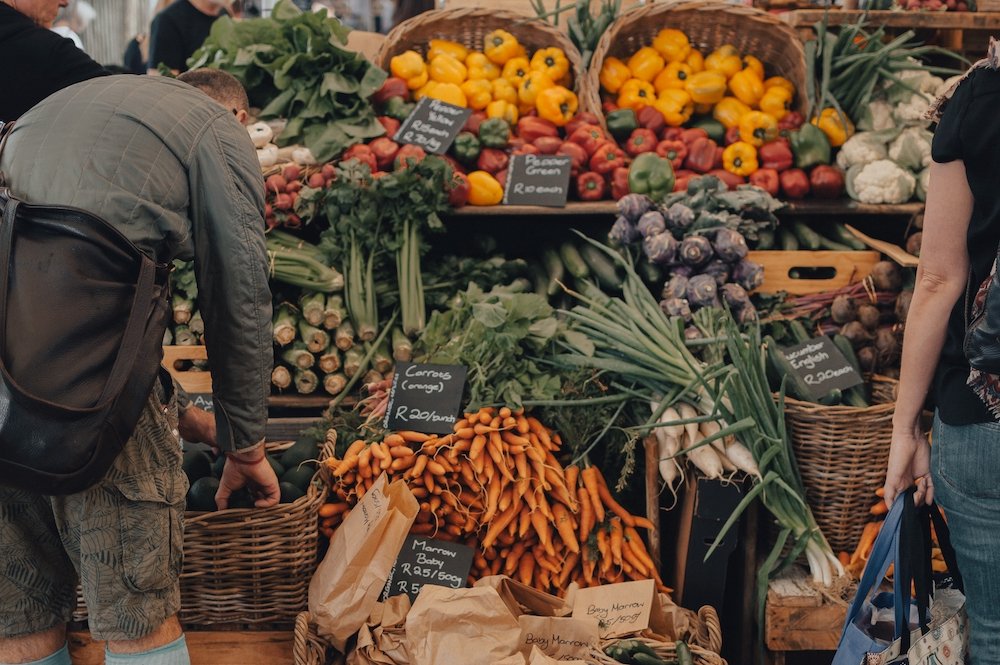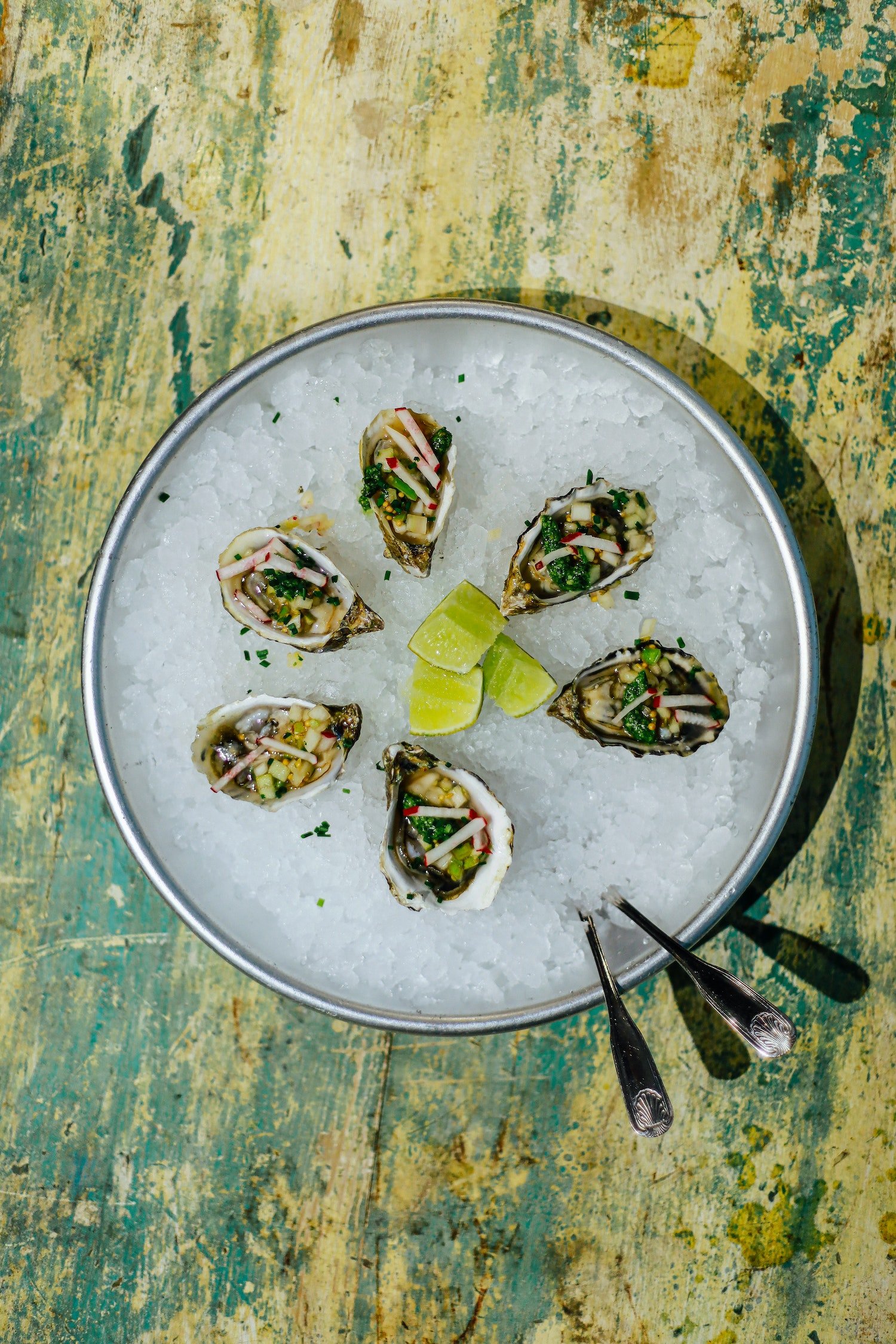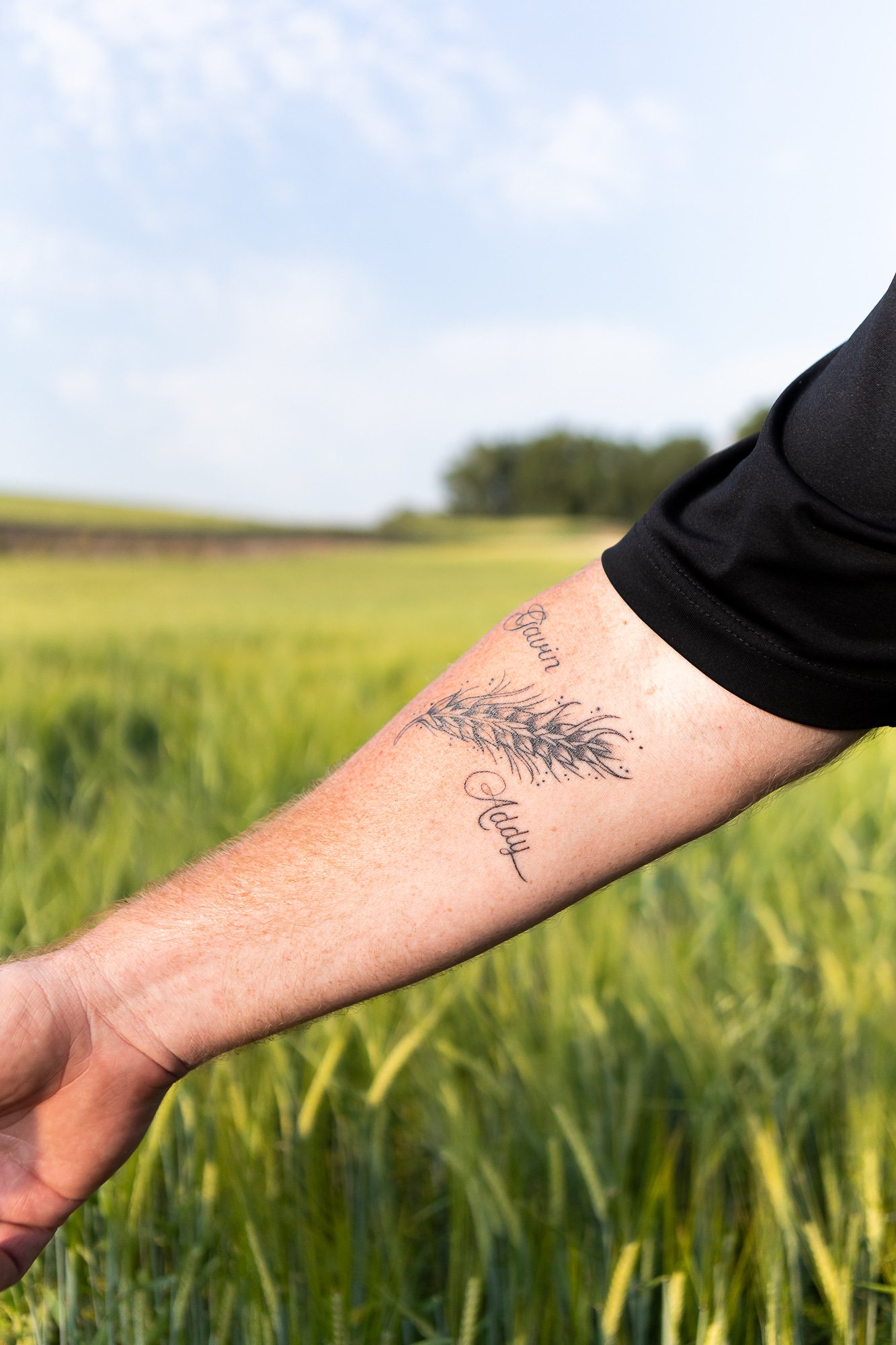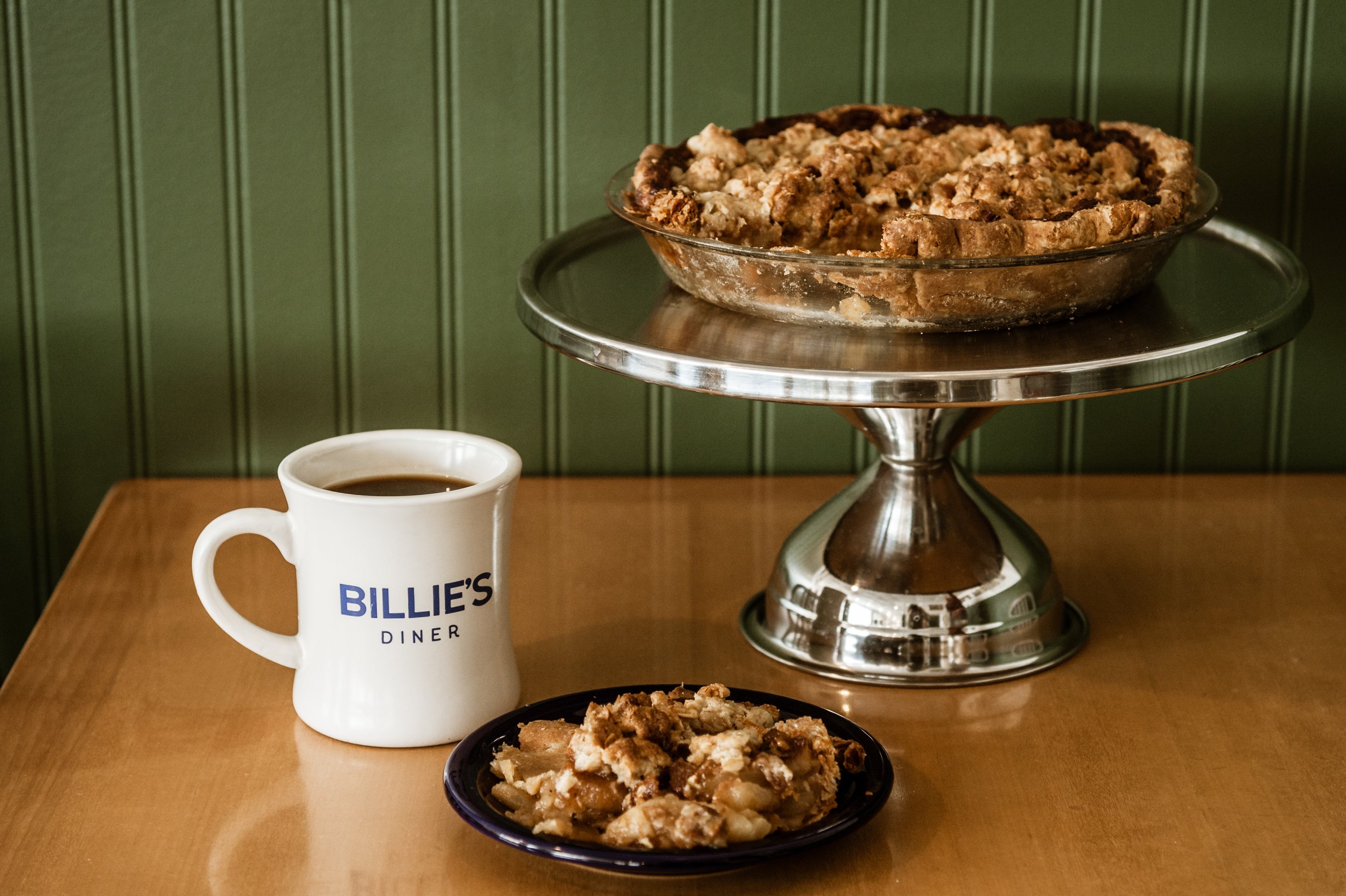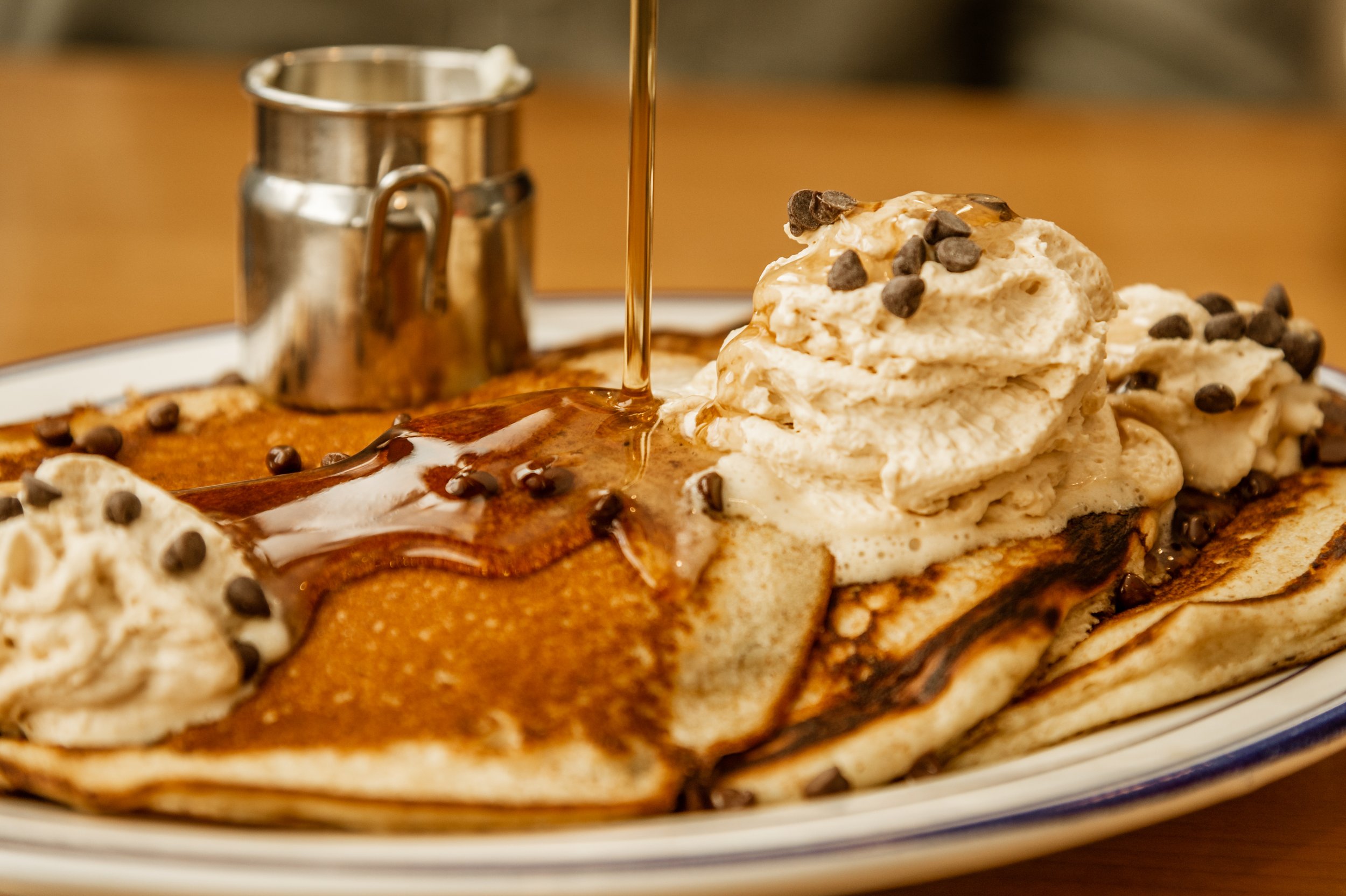Our Year of Eating Locally in Pullman
Our Year of Eating Locally in Pullman
BY ADRIANA JANOVICHAdriana Janovich recounts how she and her husband went over a year without having to buy food at the grocery store. Janovich lasted 422 days by sourcing direct from local farms and markets as well as individual growers and artisans, but there are some foods that just can't be found in Washington.
Butter is what finally did us in.
I wanted to make a birthday cake for my husband, and we had run out in early April. It was the end of September. By then we were well past our goal.
Just before the back-to-school spike in COVID-19 cases hit last year, we agreed to attempt a year of eating locally. Not 100-percent locally. But mostly locally. An estimated 75-ish percent locally.
The plan was to buy all local or regional fruits and vegetables, herbs, meats, cheeses and eggs, but make allowances for some necessities we couldn’t get from local or regional growers and producers — ingredients such as olive and other oils, sugar, salt, spices and some spirits.
The Farm Connection
We already frequented local farms and farmers markets, but this experiment would raise the bar. It also seemed completely doable where we live: the cornucopia that is the Inland Northwest. We’re lucky to live here, in proximity to so many farms and food producers.
Wheat grows here. So do lentils, garbanzo beans, apples, cherries, and vegetables and leafy greens from arugula to zucchini.
There are farms just three minutes from downtown Spokane and still inside the city limits, throughout the Green Bluff community, from Veradale to Colfax and Pullman, where we moved a year before the start of the persisting pandemic.
We inadvertently laid the groundwork for our year of eating mostly locally during the early months of the pandemic, from mid-March to mid-June 2020, when going to the grocery store felt particularly stressful, like it multiplied risk of exposure. Back then, we decided to hold out, making do with what we had on hand until things felt a little safer or at least until it felt like there were fewer unknowns. We lasted 89 days.
At the end of it, the COVID-19 situation didn’t necessarily feel safer or less stressful, and there were still plenty of unknowns. But our little experiment got us thinking: Could we make it an entire year without going to the grocery store?
Live Like a Locavore
Ours wouldn’t be the first household to try a variation of such an experiment. Author Barbara Kingsolver famously spent a year eating foods she and her family — and some nearby farmers — grew or raised themselves in 2007’s “Animal, Vegetable, Miracle.” Canadian couple Alisa Smith and J.B. MacKinnon spent a year of eating locally in what they dubbed their 100-mile diet, writing about the endeavor in their 2007 book “Plenty.” In 2008’s “Year of Plenty,” pastor-author Craig Goodwin detailed the year he and his family spent consuming only what was local, used, homegrown or homemade in suburban Spokane. And in 2014’s “Blessing the Hands that Feed Us,” Vicki Robin wrote about her one-month pledge to eat only food sourced within 10 miles of her Whidbey Island home. That meant no sugar, salt, tea or grain.
I confess I haven’t read all of these books, just parts of Kingsolver’s and all of Robin’s. But the premises—of sustainable consumption, supporting local food systems and farmers, lessening the carbon footprint of our food intake—intrigued me. I had been wanting to do something similar for quite some time.
What my husband and I were hoping to do wasn’t unique, but it was new to us and — we believed — worth doing. And what better time to start than during a pandemic?
We were already sticking close to home because of lock-downs and social distancing. Cooking from scratch was already something we enjoyed. So was shopping at farmers markets and farm stands. Our yearlong experiment would just kick all those things up a notch.
Prepping the Pantry
So, sometime in early summer 2020, we sat down together and sketched out a rough estimate of what we thought we might need, particularly from the time the farmers markets closed at the end of October until they opened back up in early May. Winter was a bit of a worry. In June, we began referencing one of the oft-repeated mottos from “Game of Thrones,” joking as we parboiled potatoes to freeze for later: “Winter is coming.”
We already usually made our own mayo, mustard, ketchup, salad dressings, most sauces and bread, which we sometimes made from flour we milled ourselves. But we weren’t canners. We didn’t raise backyard chickens. And besides herbs in pots, we didn’t grow any of our own food. That is largely because the only outdoor space at the condo where we spent the first 15 months of the pandemic was a postage stamp-sized, north-facing balcony and a paved two-car driveway. There was no lawn or yard or garden. But there was a freezer in the garage, which we promptly unplugged as soon as we moved in.
To prep for our project, we plugged it back in. We figured that, with some planning and initial expenditures, we could put up enough local foods to see us through to the start of the next farmers’ market season. We bought in bulk from local farms, freezing tomatoes, beets, carrots, garlic and hardy greens. That fall, we bought storage onions, shallots, garlic, apples and squash.
When the farmers markets closed for the season, we placed a standing order with a local farm stand for fresh greens. We also ordered eggs and cheese from another farm via text message, paying in person at a weekly parking-lot pop-up.
Our regimen wasn’t as extreme as those of the aforementioned writers. We didn’t eat 100 percent local. We didn’t draw a certain-mile radius around our home. We didn’t give up coffee. We did go without almost all dairy products: milk, heavy cream, ricotta, mascarpone, cream cheese, yogurt.
We also made exceptions. For the rice, baking soda, baking powder, cocoa powder, powdered sugar and other items already on our shelves. The tahini, hot sauce, chocolate chips, capers, couscous, pasta and canned tomato paste in the pantry would not go to waste. Neither would the vanilla, vinegar, dried chile peppers and remaining jar of Nutella.
Seasons Eatings
While we rationed some ingredients and went without others, including some we really missed — citrus, certain specialty cheeses, turkey at Thanksgiving, the dark chocolate peanut butter cups from Trader Joe’s — the quality of the food we did get was noticeably better. The yolks of the farm-fresh eggs were richer and deeper in color. The tomatoes, never mealy, seemed tangier. The greens, crisper. The garlic, more garlicky. The beef, more flavorful.
We began to feel more in tune with the rhythm of the seasons and connected to the community and its farmers and food producers. At the end of last season’s drive-thru farmers market — it sprung up in response to the pandemic — we received handwritten notes of thanks from the people who grew the food we had been eating.
We did have our moments, though, moments when it was tempting to place an online order for curbside pick-up — like most of our friends were doing throughout the pandemic. Some of them applauded our efforts, understanding our motivations. Others said, “I could never do that.”
Craving the Exotic
About halfway through the year, although he already knew the answer, my husband asked, “When are we going to the grocery store?”
The holidays had come and gone, but vaccines weren’t yet available. It was dark and cold. We were cooped up. Oranges for old-fashioneds and a couple of pints of Ben & Jerry’s ice cream were just a click away. Still, I reaffirmed my commitment.
“When it’s been a whole year,” I said.
“But, avocados,” he protested.
I wanted them, too. And, later, butter. We underestimated our use and went nearly six months without it, running out at Easter. That’s ultimately what sent us out for curbside pickup—our first of the pandemic—a full 422 days since our last trip to the supermarket.
The funny thing is when day 365 arrived, we didn’t even notice. We realized it several days later and decided to just keep going. If we didn’t need butter for the birthday cake, we might have gone further still.











